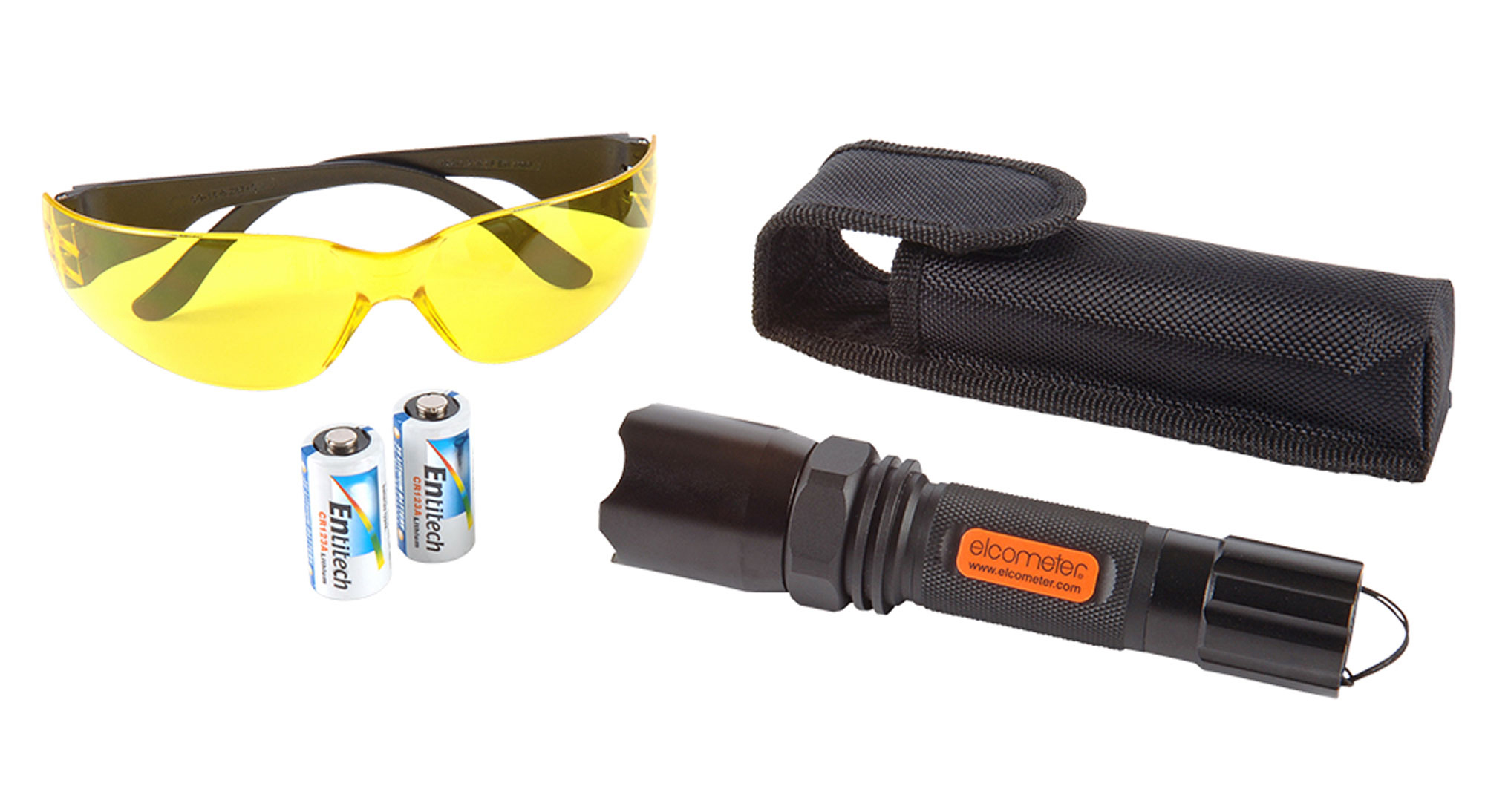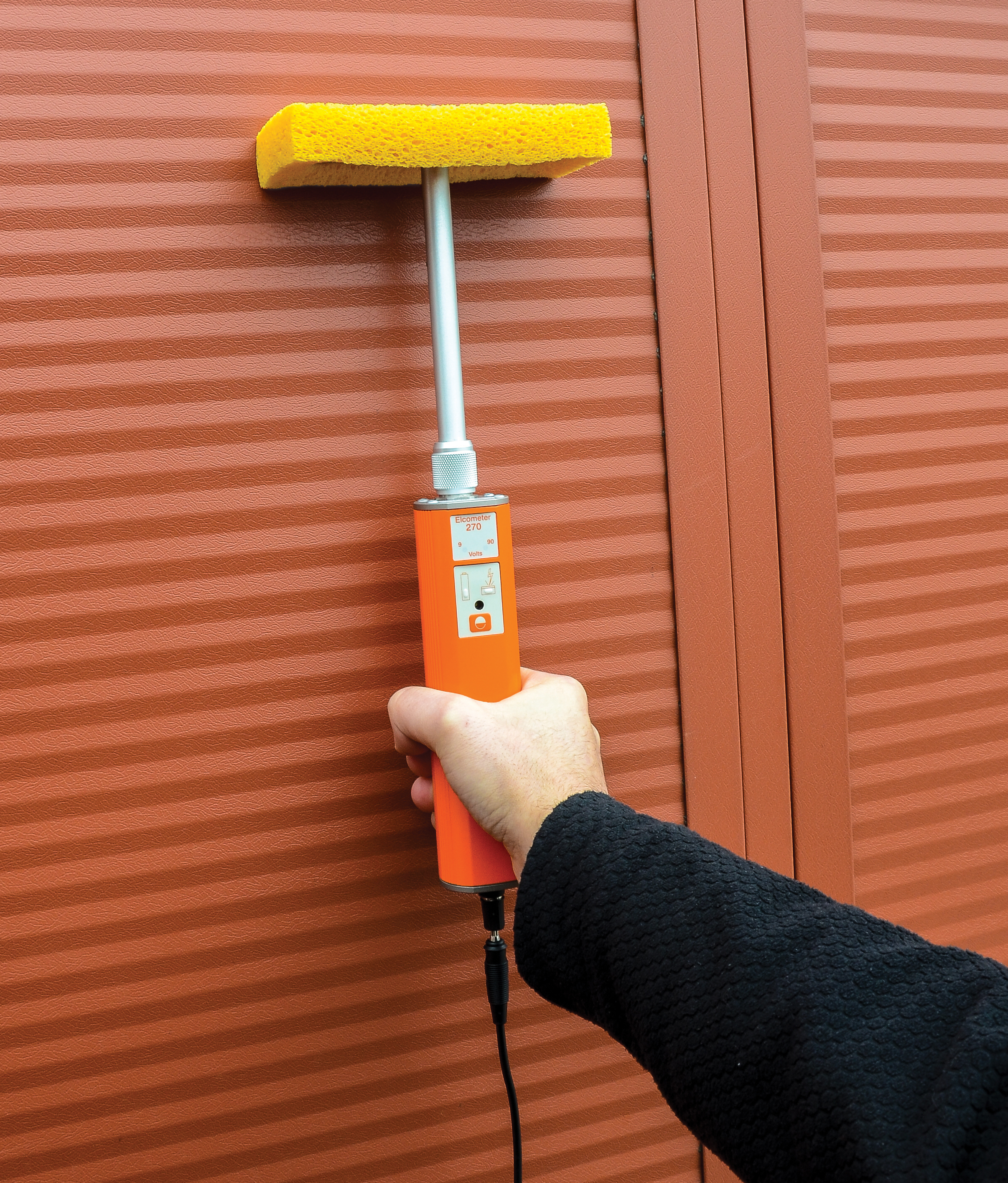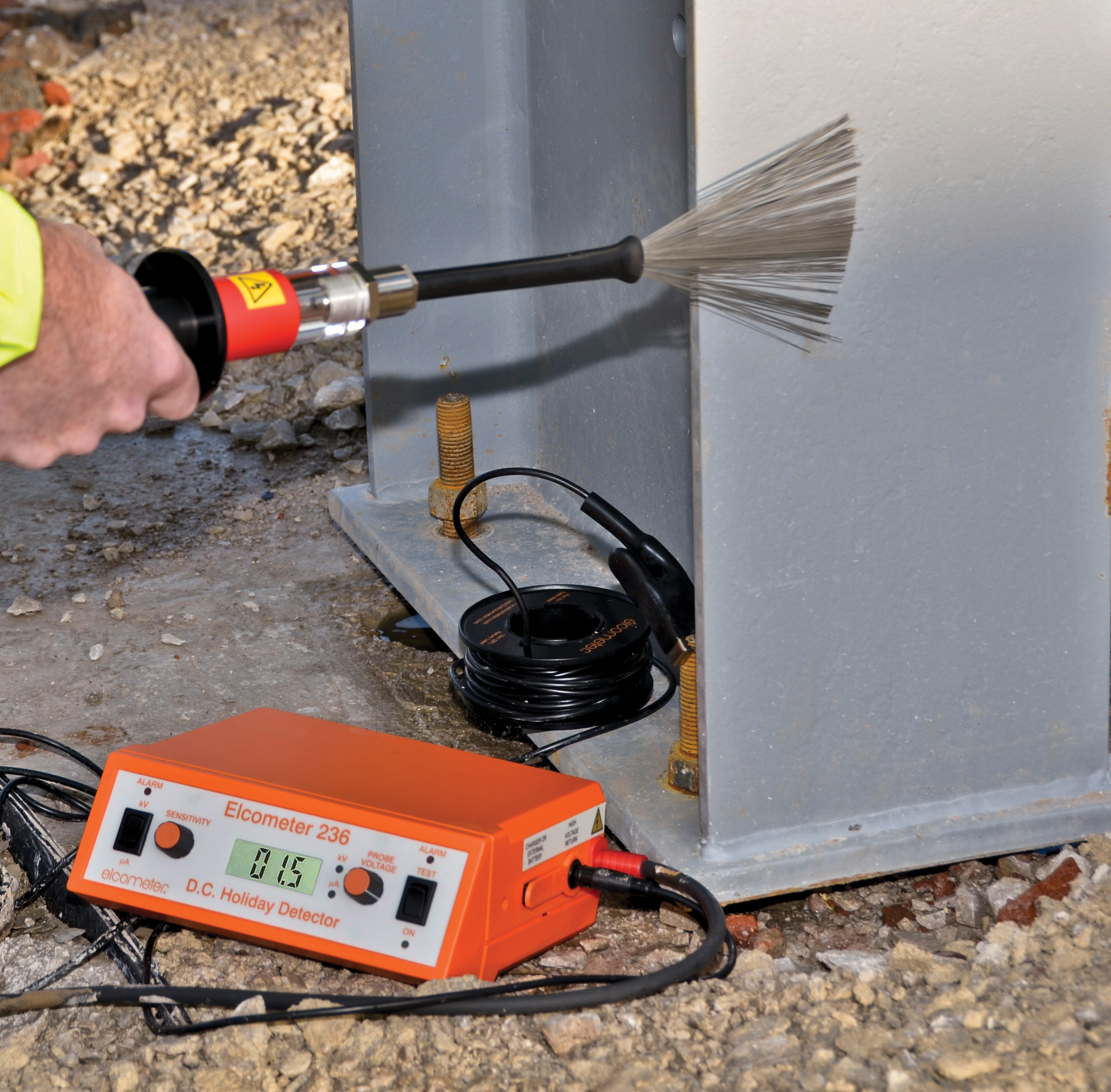
Flaw Detection Methods
A coating is applied to a substrate for several reasons; to prevent corrosion, to reduce abrasion or to reduce product contamination. The required integrity of the coating is dictated by the application for which the substrate is used. The holes in a coating, known as “holidays” or “discontinuities”, are often very small or invisible to the naked eye.
There are, essentially, three flaw detection methods:
1. UV Pinhole Detection
2. Wet Sponge
3. High Voltage
UV Pinhole Detection
Coatings move under gravity leaving a thin dry film.One of the more obvious porosity issues would be pinholes, where the substrate is open to the elements through the pinhole. These flaws can be detected by ultraviolet light.
This method can be used as a low cost, quick method of detecting pinholes in coatings. An initial, fluorescent base coat is applied to the surface. The specified coating system is then applied on top of this.
Any pinholes in these subsequent layers will fluoresce when a UV flashlight such as the Elcometer 260 UV Pinhole Flashlight is shone on the surface. If a black spot is seen under UV light, then the pinhole penetrates all the way to the substrate.

Wet Sponge

A more sophisticated approach to pinhole detection, and one not requiring the pre-preparation of the substrate with a fluorescing base coat, is the wet sponge technique using a tester such as the Elcometer 270 Pinhole Detector. The low voltage wet sponge test is generally used for determining the existence of pinholes in coating films that have a total thickness of 0.5mm (20mils) or less.
The signal return cable is connected to an uncoated part of the metal substrate using the crocodile clip. The sponge is moistened with clean tap water (tap water contains salts which enables it to conduct electricity) and then passed over the coated surface. If the sponge passes over a pinhole in the coating, water will fill the hole, the LED will flash and an audible alarm will sound. The alarm will stop when the sponge moves away from the pinhole. If required, the pinhole can be located more precisely by retesting the area using a corner of the sponge only.
The wet sponge technique is suitable for measuring insulating coatings less than 500μm (20mils) on conductive substrates, and is ideal for powder coatings and other coatings where the user does not wish to damage the coating.
One potential problem with this technique is that the surface tension of the water can cause the formation of water droplets which will collect on the surface being tested. If this happens, the water may not flow into the smallest pinholes. A surfactant or wetting agent can be added to the water used, which significantly reduces the surface tension enabling the water to penetrate the smallest pinholes.
High Voltage Holiday Detection
The high voltage, or porosity technique is ideal for inspecting pipelines and other protective coatings. Coatings on concrete can also be tested using the high voltage technique. There are three high voltage testing methods, AC, DC and Pulsed DC.
High voltage testing, which determines the presence and number of discontinuities in a coating film, is performed on a non-conductive coating and applied to an electrically conductive substrate. The allowable number of discontinuities should be determined prior to conducting this test since the acceptable quantity of discontinuities will vary depending on coating film thickness, design and service conditions.
High voltage test equipment is normally used to determine the existences of discontinuities in coating films with a total thickness greater than 500 microns (20mils). The wet sponge technique can be used on coatings with a thickness of less than 500 microns (20mils) as they may be damaged by high voltage spark testing equipment. The coating manufacturer should be consulted for recommended test equipment and inspection voltages.

Continuous DC detectors such as the Elcometer 236 DC Holiday Detector require a direct connection to the conductive substrate. The detector generates a high DC voltage that is applied to the coating surface through a probe. In addition, the detector is connected to the substrate via the high voltage return (earth) lead.
When the probe is passed over a coating flaw the electrical circuit is complete and the current flows from the probe to the substrate. As a result, audible and visual alarms are activated in the detector and a spark may be produced at the flaw.
Care needs to be taken when selecting the voltage used for testing. The typical breakdown voltage for air is ~4kv/mm. The amount of electric strength most coatings can withstand without breaking down is between 6kV/mm and 30kV/mm. This is known as dielectric strength and can change depending on the formulation of the coating. A voltage should be chosen that is strong enough to breakdown the air but not so strong that it causes damage to the coating.
